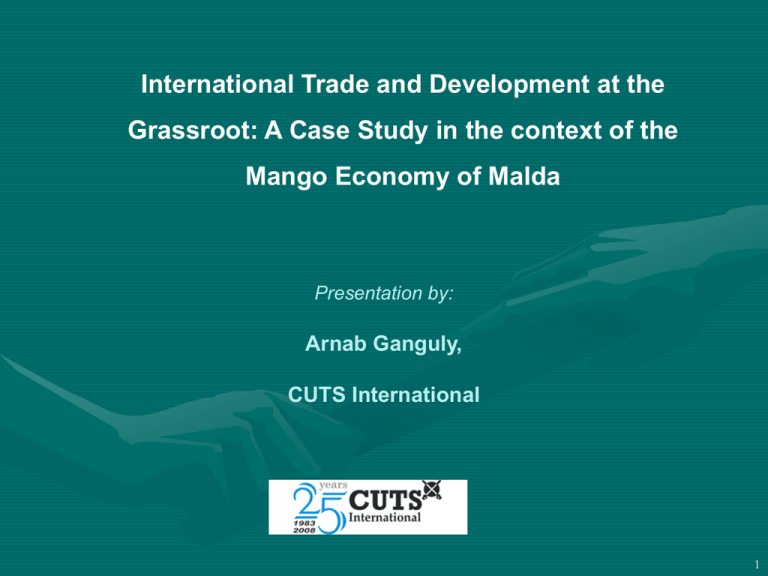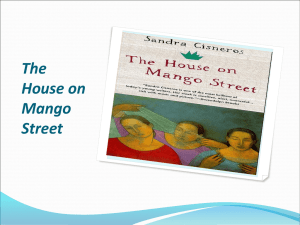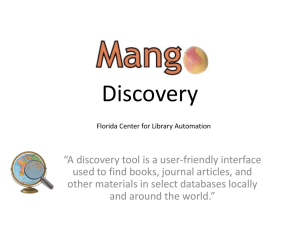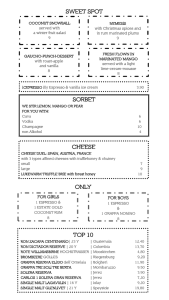International Trade and Development at the Grassroot: A Case
advertisement

International Trade and Development at the Grassroot: A Case Study in the context of the Mango Economy of Malda Presentation by: Arnab Ganguly, CUTS International 1 International Trade and Development at the Grassroots Trade can be a powerful source of economic growth International trade Expands Market Facilitates Competition Creates Opportunities for Growth Facilitates Poverty Reduction Fosters human development International trade by itself does not necessarily lead to human development. It requires supporting domestic policies and important safety nets 2 National Foreign Trade Policy 2004-09: The Indian Context In the Indian context the National Foreign Trade Policy, 2004-09, envisages a programme that seeks to secure economic growth and national development. Formulated and effective from August 2004, major landmarks attained are: Increase in exports from US $63 billion in 2004 to US $155 billion in 2007-08 i.e. 2.5 times increase in what it was 4 years ago Total Trade in goods and services accounts for 50% of India’s GDP In the last four years increased trade activity has created 136 lakh new jobs Source: Foreign Trade Policy 2004-09, Annual Supplement – 2008-09 3 National Foreign Trade Policy 2004-09: The Indian Context………(contd.) The Question is How much of the resultant benefits have accrued to the real producers? How increase in exports of specific products have affected various stakeholders at the Grassroots? 4 Relevance of the Case Study CUTS-International with the support of Royal Norwegian Embassy, New Delhi and Oxfam (The Netherlands) conducted a case study on the mango economy of Malda. Objectives of the Case Study: To understand whether NFTP has impacted (or not impacted) export of Specific Products To explore the various channels through which benefits of International Trade trickle down at the grassroot thereby affecting specific variables like employment generation, women empowerment etc. 5 Tools used for the Study Questionnaire Survey of the various stakeholders Focused Group Discussion with Growers, Exporters and Mango Merchants and Processing Units (wherever applicable) 6 Stakeholders interviewed for the study Government Officials Mango Growers Exporters Mango Merchants Aratdars Processing Units Daily Labourers working in the mango orchards Wooden Box Manufacturing Units Women Groups (wherever applicable) 7 Stakeholder Category Their Role in the Mango-Economy Number Mango Exporters Export mango to Other countries (though a majority of them export mango to Bangladesh) 7 Mango Merchants (Mahajan) This group of stakeholders invest their money in mango cultivation which includes buying and selling of orchards. They appoint Barials, who purchase/ sell orchards on behalf of the mango merchants and also oversee the activities necessary to maintain the orchards during the entire cultivation period. The mango merchants share profit with barials on pre-specified terms. These mango merchants may or may not have their own marketing network. During the ripening season for mango, the mango merchants sell the produce either to the local wholesaler (aratdars) or to the exporters. 6 Growers Primary stakeholders who grow mango. They are different from the barials in the sense that the barials are more like contractors and share profit with the merchants. Growers on the other hand invest their own fund, look after their own orchards and finally sell the product themselves to the aratdars. Growers also do not share their profit with any other group of stakeholders. 35 8 Stakeholder Category Their Role in the Mango-Economy Labourers This refers to the wage labourers working in the orchards. They get their payment either daily or, weekly. 50 Processing Units in the Formal Sector The processing units registered with the DoFPI&H or any other government certifying agencies 3 Processing units in the Informal Sector The unregistered units mainly engaged in selling mango slice to the various registered Food Processing units for preparing pickles 1 Women They prepare various mango products like Amshawtto, Amchur. They also work in various fruit processing industries (locally called SLICE FACTORIES, during May-August 5 Packing Box manufacturing unit After the mango is plucked, it is packed in wooden boxes for exporting to Bangladesh or other states of India. This is necessary to prevent the fruits from perishing in the transit. 3 Total Number 110 9 Approach to the Survey Step-1 Interviewing the exporters and identify the major mango growing areas in the district, the major export destinations, change in livelihood pattern of the grassroots stakehodlers related to production of mango in the district and involvement of women in the entire mango economy Step-2 Interviewing the Mango Merchants and identify the major mango growing areas in the district, their nature of contract with the growers, the barials and the wage labourers, change in livelihood pattern of the grassroots stakeholders related to production of mango in the district etc Step-3 Interview the growers and the labourers to understand the nature of contract between the merchants and the exporters Step-4 Interview the processors and understand their role in the mango economy 10 Major Findings of the Field Survey 11 Interlinkage among various stakeholders in the Mango Economy of Malda 12 Growers Aratdars Rs10/Kg + 5% (Commission of the ARATDARS to be paid by the growers) = Rs10.50/Kg Indian Markets Rs10.50/Kg + 5% (Commission of the ARATDARS to be paid by the Exporters) = Rs11/Kg Middleman / Traders Indian Exporters Rs11 + 2.5% (Exporter’s Profit Percentage) + Rs18/Kg (Import Duty) ≈ Rs30/Kg Bangladesh Market Importers in Bangladesh 13 Mango Merchants Aratdars Bariyal Indian Markets Bangladesh Market Indian Exporters Middleman / Traders Importers in Bangladesh 14 Reasons why the growers, mango merchants, and the exporters prefer trading with Bangladesh Perspective of Growers Price of mango in Bangladesh is higher than in any other market in India. For example, the same Fajli variety that sells for Rs10/Kg in Indian markets, will fetch anything around Rs. 12-13/Kg when sold to a Bangladeshi importer Bangladesh consumes almost sixty percent of the mango produced in Malda Due to the geographical proximity of Malda and Bangladesh, chances of the consignment getting perished due to transportation lags are less 15 Reasons why the growers, mango merchants, and the exporters prefer trading with Bangladesh Perspective of the Mango Merchants Due to long standing trading relation with a few mango importers in Bangladesh It is much cheaper to export to Bangladesh when compared to other countries due to proximity, low transportation charges and loose or no quality control specifications for mango, They have limited knowledge about other export markets. The mango merchants do not directly export. They send the consignments to Bangladesh via the local exporters. Since most of the exporters are keen to send the consignments to Bangladesh, the mango merchants follow suit. 16 Reasons why the growers, mango merchants, and the exporters prefer trading with Bangladesh Perspective of Exporters • The exporters have long standing trade relationship with the importers in Bangladesh • Cost of transporting consignments of mango to Bangladesh is much less than any other country • Due to the proximity to Bangladesh the exporters can visit Bangladesh frequently and can follow up with the importers. This helps in reducing the default risk to a large extent • Quantum of orders received from importers in Bangladesh is much higher when compared to any other country 17 Wooden Box Manufacturing Units Various Unskilled / Skilled jobs in the mango Orchards & packaging units Different Types of Employment Opportunities in a MangoEconomy Women Preparing Mango Products at home Men & Women* working in the Processing Units (Formal / Informal) 18 Beneficial Changes in the Mango-Economy Increase in the area and production of mango Improvement in the quality of mango orchards Increase in daily wage of the labourers Increased employment in supporting sectors Exporters are being able to access various government schemes better than before Women are more involved in Mango-Economy than before 19 Some Roadblocks to a better Mango–Economy Security of Payment Growers were not sure whether exporting mango to other countries will be Profitable Lack of necessary export infrastructure in Malda Processing Units in the District suffer from infrastructural weaknesses 20 Key Recommendations Promoting mangoes from Malda as a brand in International Markets Orientation to the local growers and exporters in the district to export to countries apart from Bangladesh Promoting formation of Growers’ cooperatives Providing the necessary infrastructural support required for export Strengthening the Processing Units in the District 21 22






